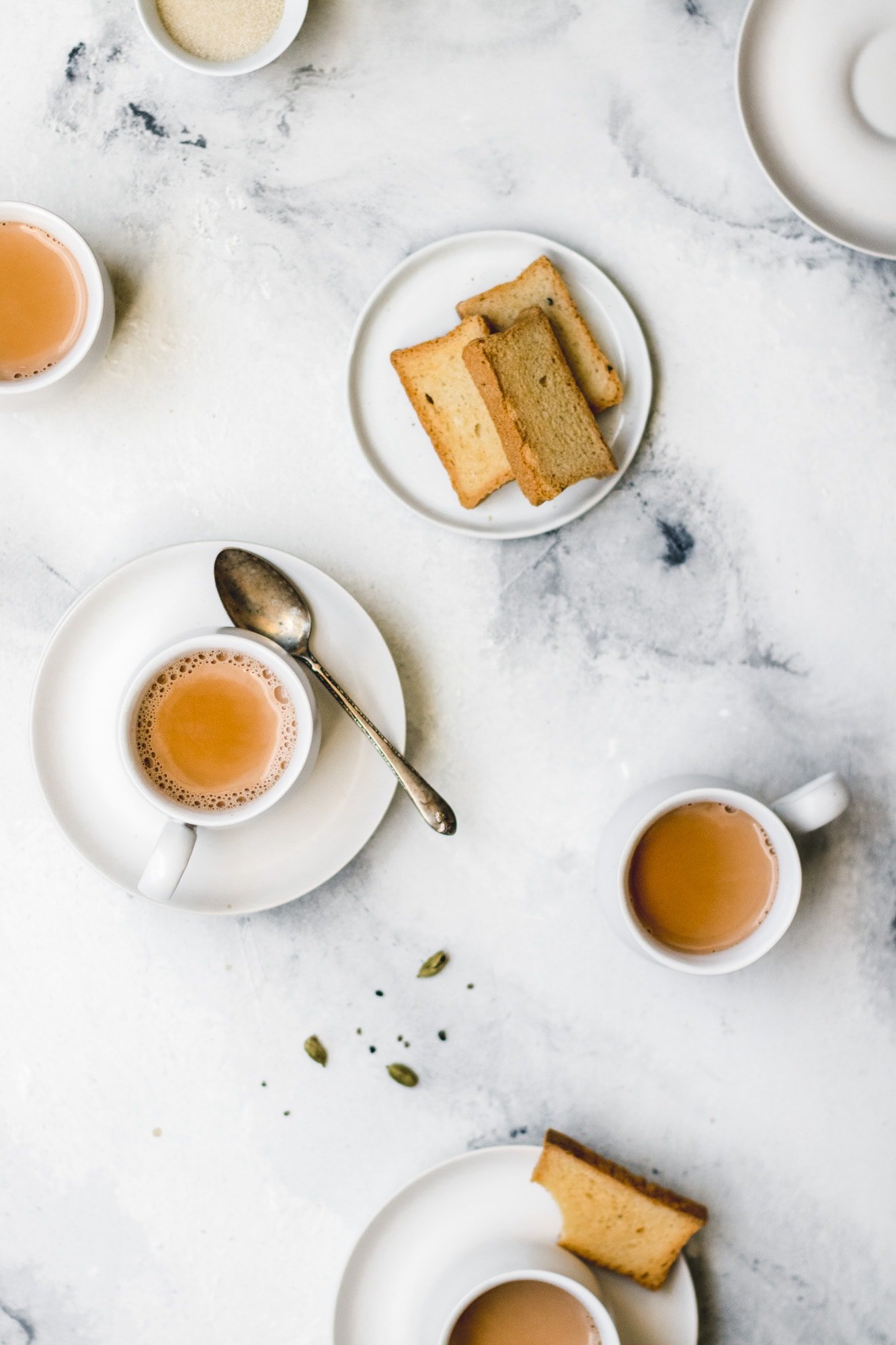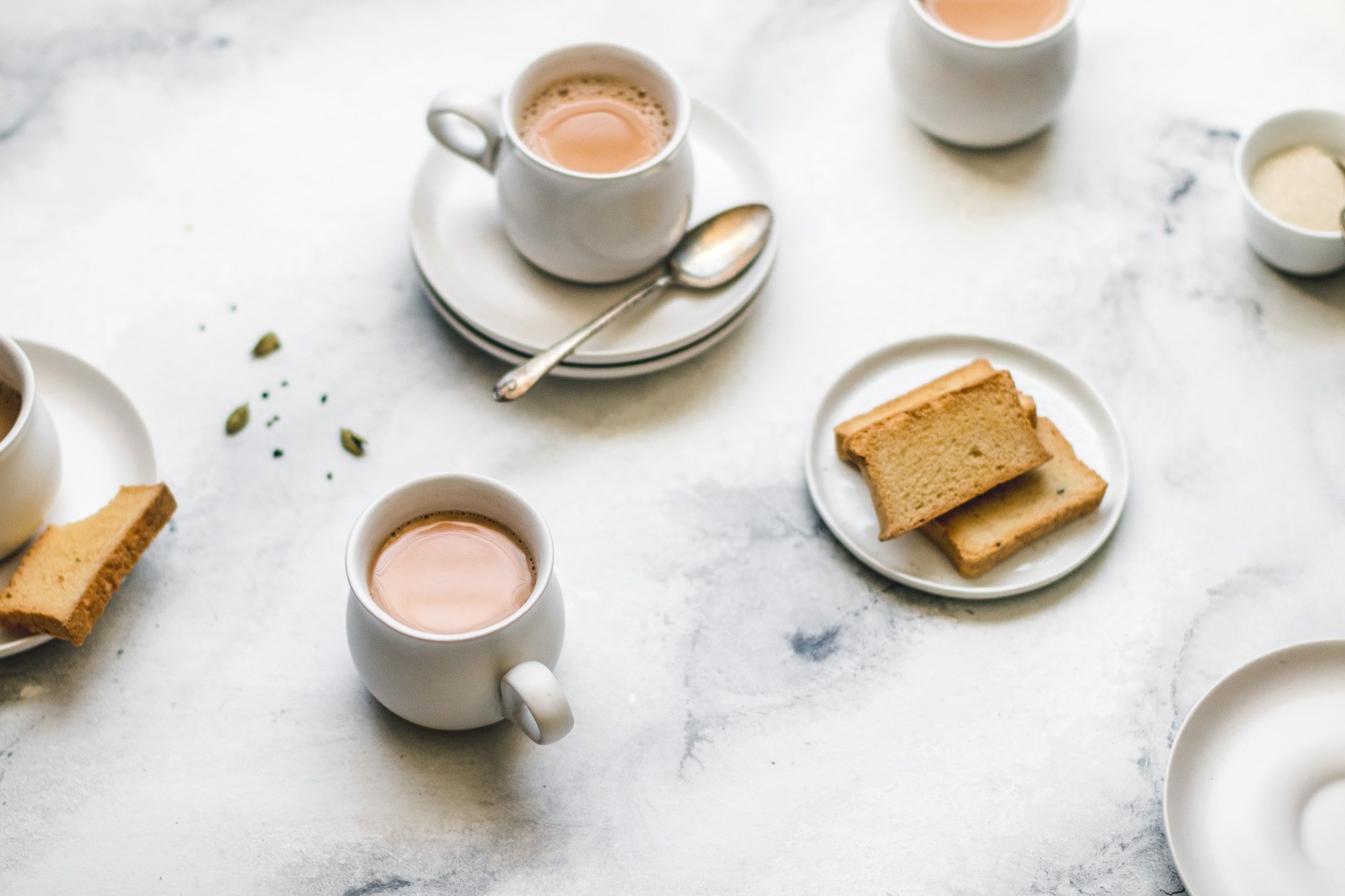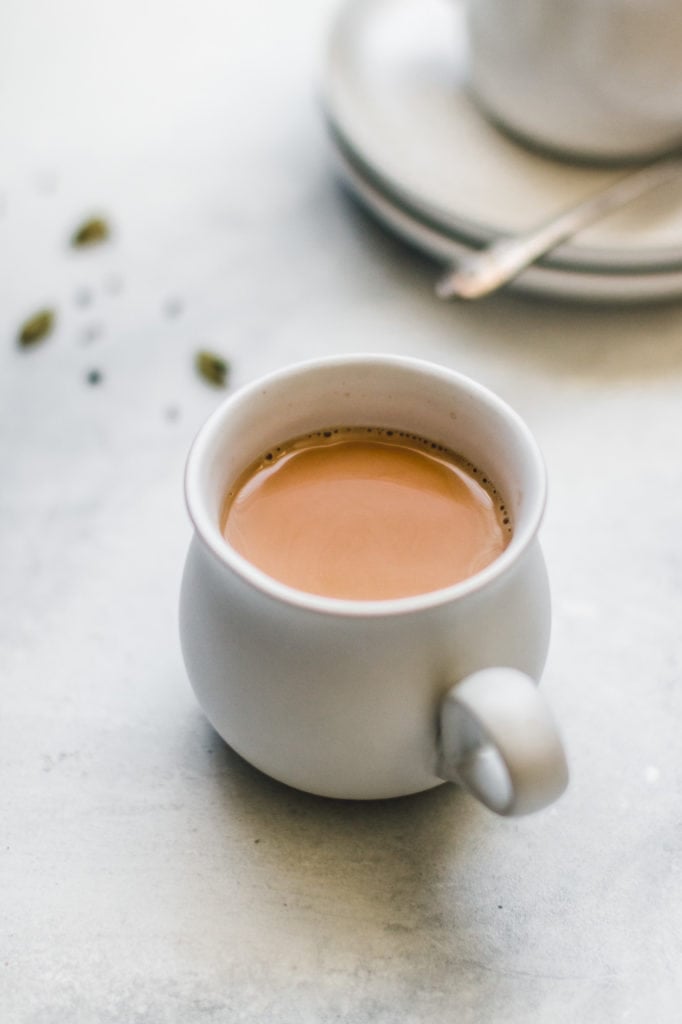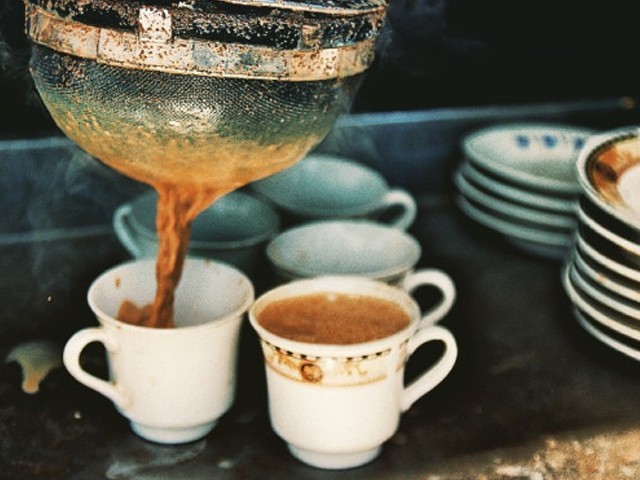
This Authentic Pakistani Chai recipe can be prepared quickly and easily over the stovetop. With just a few ingredients that you likely have on hand, you can experience the household chai tea of Pakistan and India. Tips and tricks included for the perfect cup!
PAKISTANI TEA
Every household is different, but the daily cup of chai the average Pakistani family drinks bears little resemblance to the chai tea latte you find at your local coffee shop.

As cliché as it sounds, chai is more than a drink. It’s a daily ritual that infuses calm and a heightened sense of the moment. It’s something I look forward to and delight in. My elixir.
And then there’s the social drinking aspect. It’s the surprise ending that follows a good meal. It says, “wait, there’s more.” More chatter, more laughter. We’re not done yet.

Making chai is incredibly simple and quite forgiving. To make it, you simply:
- Bring the water to a boil and add the tea and cardamom pods. Allow this to simmer.
- Add milk and let it come to a boil. Continue to boil, removing from heat as needed or simmer to desired strength. If desired, use a ladle to aerate the chai.
- Pour into cups and sweeten as desired.

TIPS FOR THE PERFECT CUP OF CHAI:
- Once you add the milk and raise the heat to high, remain standing overhead! If you decide to step away even for a second, the chai will take the cue and use this opportunity to boil over. If you’d rather not stand overhead, once it begins to boil, you can lower the heat to low-medium and let the chai simmer. Then proceed with the rest of the process. Simmering will result in a stronger cup but will also reduce the quantity.
- Use a ladle to repeatedly scoop up and pour back the chai. This helps develop the flavor and makes it frothy.
- Some liquid will evaporate while you’re making the chai, so the amount of liquid you begin with will be more than the end amount.
- I’ve given the ratio of 1 1/2 teaspoon of tea leaves (or 2 teabags) for 2 small cups (8 oz), but you can adjust to taste depending on the type of tea. Like with any drink, you’ll discover your preferences over time.
Authentic Pakistani Chai
The typical Pakistani or Indian family drinks chai very different from the chai latte you get at your local coffee shop. This is an authentic cup of chai you will find brewing in the typical Pakistani kitchen.
Servings
Calories75kcal
Ingredients
- 1 1/4 cup water
- 1 cup* reduced-fat or whole milkwhole milk will result in a slightly richer, creamier chai
- 1 1/2 tsp loose tea-leaves or 2 black teabags (I use Tapal Danedar) or more to taste
- 1-2 cardamom pods slightly broken or a pinch of cardamom powder (optional)
- sweetener to taste
Instructions
- Place water in a saucepan over high heat. Once it comes to a boil, add tea-leaves or tea bag and cardamom. Reduce the heat to medium and gently allow this to simmer for a minute or two.
- Add the milk and raise the heat back to high.
- As it begins to boil, the chai will rise in the saucepan. Remove the pan from heat before it reaches the top of the saucepan. Do this a few times to really develop the flavor while using a ladle to scoop and pour back the chai. Side story time! In a 2009 trip to Pakistan, we stopped for some chai at a tea stall on the way to Nathia Gali. The place was heavenly but that chai was unforgettable. Luckily I had observed the process – I remember the chai wala(tea vendor) used a ladle to repeatedly scoop up and pour back the chai. I’ve tried this technique and can attest that it does enhance the flavor. Try it!
- Pour this chai through a small sieve into your favorite cups and sweeten using sugar or honey.
Notes
*Feel free to reduce the amount of milk and increase the water if you prefer thinner, less milky chai.
Nutrition
Calories: 75kcal | Carbohydrates: 6g | Protein: 4g | Fat: 4g | Saturated Fat: 2g | Cholesterol: 12mg | Sodium: 59mg | Potassium: 156mg | Fiber: 1g | Sugar: 6g | Vitamin A: 192IU | Calcium: 134mg | Iron: 1mg

Comments
Post a Comment